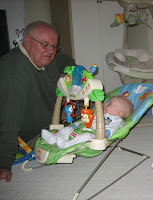Raymond Leo Jablonski
Cincinnati Redlegs
Third Base
Bats: Right Throws: Right Height: 5'10" Weight: 175
Born: December 17, 1926, Chicago, IL
Signed: Signed by the Boston Red Sox as an amateur free agent before 1947 season
Major League Teams: St. Louis Cardinals 1953-1954; Cincinnati Reds 1955-1956; New York Giants 1957; San Francisco Giants 1958; St. Louis Cardinals 1959; Kansas City Athletics 1959-1960
Died: November 25, 1985, Chicago, IL (age 58)
With the Cardinals in 1953 and 1954, Ray Jablonski's first two seasons in the big leagues were by far his best. He drove in over 100 runs in each season. He finished third in the Rookie of the Year voting in 1953 and was the starting third baseman for the N.L. in the 1954 All-Star Game. Jablonski was traded to the Reds before the 1955 season as the Cardinals wanted to make room for rookie Ken Boyer (#14), a better defender at third. After two seasons in Cincinnati, Jablonski moved onto the Giants where he was the team's regular third baseman during their final season in New York. He served as a bench player the final three years of his Major League career with the Cardinals and Athletics.
Jablonski played until 1964 in the minor league systems of the Angels and Twins. Over his eight seasons in the Majors, he hit .268 with 83 home runs and 438 RBIs.
Building the Set
August 29, 1988 in Millville, NJ - Card #63
I shared this story back in March 2019 when I posted the Tom Brewer (#34) card and again this past August with the Ed Roebuck (#58) card, but I'll repeat it again here. This Jablonski card was one of four cards I acquired for our 1956 Topps set via a trade, and all I had to surrender were a bunch of 1988 Topps doubles.
We were about a year in to officially collecting the 1956 Topps set when I added four cards to the set through a trade with a friend of mine. Now my friend probably has no recollection of this, but I'm going to omit his name to protect the innocent. In the summer of 1988, I was aware of a few different baseball card collectors from my school. Most of them were busy accumulating as many "Future Stars" cards from the 1988 Topps set as possible, convinced these cards would be worth hundreds of dollars in a matter of a few short years. The Kevin Elster card was a particularly hot commodity, as was anything with a Topps Rookie Cup on it such as the cards for Mark McGwire, Mike Greenwell, Ellis Burks and Casey Candaele.
My friend had four 1956 Topps cards set aside in an "oldies" pile, and I'm guessing he had added these to his collection by accident or maybe through an older relative. In any event, I went over to his house this late summer day in August, equipped with my 1988 Topps doubles, and ready to deal. I don't remember the specifics of the trade, but I ended up with four 1956 Topps commons, including this Jablonski card, and he ended up with a small stack of 1988 Topps rookies. We were both happy with our respective hauls, so in our minds it was a fair deal.
I've lost track of this friend over the years, but his name lives on in my official records of how each card in our 1956 Topps set was obtained.
The Card
Any action shot on a baseball card that features dust being kicked up as a result of a slide is a good action shot. I might be imagining it, but I think that's a Cardinal on the front of Jablonski's jersey. Topps used a different photo for Jablonski's 1954 Topps card, but the same photo for his 1955 Topps card. Jablonski would have been coming off a tough first season with the Reds when this card was issued, but his two first 100+ RBI seasons would still be in collectors' memories.
A successful minor leaguer, Jablonski was the league MVP in 1951 for the Carolina League, winning the league's triple crown while playing for the Winston-Salem Cardinals.
Redlegs Team Set
1956 Season
On November 13th, the Reds traded him with Elmer Singleton to his hometown Cubs for Warren Hacker (#282), Don Hoak (#335) and Pete Whisenant. Although his 1957 Topps card features him with the Cubs, he never played a game for the team as they traded him to the Giants on April 16, 1957.
Phillies Connection
At the age of 35, Jablonski played the 1962 season with the Dallas-Fort Worth Rangers, a shared AAA team of the Angels and Phillies. His teammates that year included future Phillies Pat Corrales and Cookie Rojas.
|
|
|
|
|
First Mainstream Card: 1953 Topps #189
Topps Flagship Set Appearances (7): 1953-1959
Most Recent Mainstream Card: 1994 Topps Archives 1954 #26
29 - Jablonski non-parallel baseball cards in the Beckett online database as of 1/4/20.
Sources:
Baseball Reference
Beckett Database
SABR
The Trading Card Database
In some cases, the first and last cards listed above are subjective and chosen by me if multiple cards were released within the same year. Most recent mainstream card may also be subjective and does not include extremely low serial numbered cards, buybacks or cut autograph cards.
Previous Card / Next Card
Order Collected: #58 Ed Roebuck - Brooklyn Dodgers / #97 Jerry Lynch - Pittsburgh Pirates



























